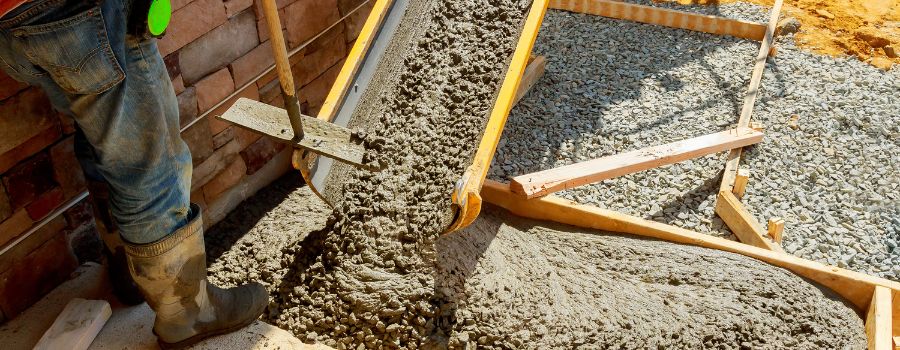
Concrete Safety: Tips and Best Practices for Handling and Working with Ready Mix Concrete
Concrete is an integral component of the construction industry, used in various projects from buildings and roads to bridges and dams. Handling and working with ready mix concrete, a pre-mixed combination of cement, aggregates, water, and often additives, is a common task for many construction professionals and do-it-yourself enthusiasts. However, working with concrete can pose potential risks if not done safely and correctly. Here, we'll explore concrete safety, offering valuable tips and best practices to ensure your concrete projects are not only successful but also safe.
Personal Protective Equipment (PPE)
Before you begin any concrete-related task, it's crucial to prioritize your safety by wearing the appropriate personal protective equipment (PPE). Here are some essential items:
Safety Glasses or Goggles: Ready Mix Concrete can produce dust and debris, and when mixed or poured, it may splash or spill. Protect your eyes from potential irritants or splashes by wearing safety glasses or goggles.
Respirator or Dust Mask: When working with concrete, especially when mixing or cutting, you may be exposed to fine dust particles. A respirator or dust mask will help protect your lungs from inhaling these particles.
Ear Protection: Concrete mixers, vibrators, and other equipment can produce high levels of noise. Ear protection, such as earplugs or earmuffs, is essential to prevent hearing damage.
Gloves: Concrete can be abrasive and harsh on the skin. Wearing durable work gloves will protect your hands from abrasions, chemical exposure, and other potential hazards.
Steel-Toed Boots: Sturdy footwear with steel toes is essential for preventing injuries caused by falling objects or heavy materials.
Proper Lifting Techniques
When handling bags of cement, buckets of concrete mix, or other heavy materials, it's essential to use proper lifting techniques to prevent strain and injury. Follow these guidelines:
Mixing Concrete Safely
Mixing concrete is a common task in many construction projects. To do so safely, follow these guidelines:
Use a Dust Mask: As mentioned earlier, wear a dust mask or respirator to protect yourself from inhaling airborne particles while mixing dry concrete ingredients.
Work in a Well-Ventilated Area: Whenever possible, mix concrete in a well-ventilated area or outdoors. Adequate ventilation helps disperse dust and fumes, reducing your exposure.
Follow Instructions: Read and follow the manufacturer's instructions on the concrete mix or cement bag. This will ensure the correct mixing ratios and additives are used for the desired strength and workability.
Protect Skin: Concrete can be caustic, and prolonged contact with skin can cause irritation. If your skin comes into contact with wet concrete, wash it thoroughly with clean water.
Concrete Pouring and Placement
When pouring and placing concrete, there are safety measures to keep in mind:
Keep Hands and Feet Clear: Avoid putting your hands or feet in the path of a concrete chute, pump, or mixer. Keep a safe distance to prevent accidents.
Use Barricades and Warning Signs: For construction sites, use barricades and warning signs to keep bystanders and unauthorized personnel away from the work area.
Be Mindful of Slips and Trips: Wet concrete can create slippery surfaces. Be cautious when moving around and use non-slip footwear.
Concrete Vibrating
Concrete vibration is a common practice to remove air bubbles and ensure a dense, even mixture. Here are some safety tips for this task:
Keep Vibrator Handles Dry: Ensure that the handles of concrete vibrators are dry to prevent electrical shocks.
Secure the Vibrator Properly: Secure the vibrator in a way that it doesn't accidentally fall into the concrete.
Use Two-Person Operation: For larger projects or when working with heavy-duty equipment, it's often safer to have two people, one operating the vibrator and the other assisting with the process.
Curing and Handling Fresh Concrete
Curing is the process of maintaining the right moisture and temperature conditions to help concrete set and gain strength. When dealing with freshly poured concrete, consider these safety measures:
Cover Exposed Skin: Wear long-sleeved clothing and pants to protect your skin from wet concrete. If concrete comes into contact with your skin, wash it off immediately.
Avoid Lifting Forms Alone: If you're handling concrete forms, avoid doing it alone, as they can be heavy and awkward to carry.
Keep Children and Pets Away: Fresh concrete is attractive to children and pets, but it's crucial to keep them away from the work area to prevent accidents and exposure.
Proper Cleanup and Disposal
Cleaning up after working with concrete is an important safety step. Here's how to do it safely:
Conclusion
Working with ready mix concrete can be a rewarding and essential part of many construction and DIY projects, but safety should always be a top priority. By following these tips and best practices for handling and working with concrete, you can ensure that your projects are not only successful but also free from accidents and injuries. Remember that concrete safety is an ongoing commitment to protect yourself and those around you while achieving your construction goals.
For more details on ready mix concrete, connect with the team!